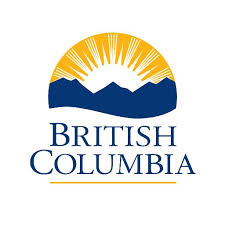stateofenvironment
Type of resources
Topics
Keywords
Contact for the resource
Provided by
Formats
Representation types
Update frequencies
status
-

A spatial file of polygons representing the seven "air zones" of British Columbia. Air zones are the basis for monitoring, reporting and taking action on air quality. Air zones are areas that typically exhibit similar air quality characteristics, issues and trends. It is the responsibility of each province and territory to delineate and manage their air zones based on local conditions. The spatial data are provided as a shapefile, geojson, and KML.
-

**NOTE: Not for operational use. This dataset is the result of an analysis (Aug 2018) of many input layers and as such the accuracy, currency, and completeness of the dataset cannot be relied upon for operational or management decision making.** Land designations that contribute to conservation are spatially-defined areas established through legislation or purchased for the protection of nature and cultural values, the conservation of biological diversity and ecosystem services and the management of natural resources. Over 40 land designations were divided into three broad categories: - **Protected Lands** includes all Parks & Protected Areas and Other Protected Lands with the primary purpose of the long-term conservation of nature and cultural values. - **Resource Exclusion Areas** includes all designations that fully exclude one or two resource activities for the purpose of conservation. - **Spatially Managed Areas** includes all spatial designations managing or limiting development or a resource activity for the purpose of conservation, or a spatial management regime in place to preserve specified elements of biodiversity but where activity is still allowed to occur. Land designations layers were combined into a single layer, with overlaps removed such that areas with overlapping designations were assigned to the highest conservation contribution category. **Data sources:** A list of the source datasets, including links to their sources, more information, and data processing steps is available [**here**](https://raw.githubusercontent.com/bcgov/designatedlands/v0.1.0/sources.csv). Details on methods are available [**here**](https://github.com/bcgov/designatedlands). Previous versions of the data are available [**here**](https://github.com/bcgov/designatedlands/releases).
-

This record contains Grizzly Bear population estimates for British Columbia for multiple years: 2012, 2015 and 2018. The 2012 Grizzly Bear population estimate report for British Columbia report is available here: http://www.env.gov.bc.ca/fw/wildlife/docs/Grizzly_Bear_Pop_Est_Report_Final_2012.pdf. The 2018 Grizzly Bear population estimate report for British Columbia report is available here: https://www2.gov.bc.ca/assets/gov/environment/plants-animals-and-ecosystems/wildlife-wildlife-habitat/grizzly-bears/grizzly_bear_pop_est_report_2018_final.pdf Grizzly Bear population estimates for 2015 & 2018 are provided below in tabular comma separated value (.csv) file format, as well as a zipped (.zip) Esri file geodatabase (.gdb) spatial data file format. There is no spatial difference between the 2015 & 2018 spatial data polygons, as only the population estimate numbers in the spatial data's attribute table were updated (and only if a change in population estimates occurred from 2015 to 2018). 2015 population estimates are based on 2012 numbers, but adjusted to the revised GBPU sub-units. The 2015 & 2018 population estimates in the comma separated value (.csv) tables are provided in two units: 1. Grizzly Bear Population Unit (GBPU) and 2. GBPU sub-unit. The sub-units are composed of Grizzly Bear Population Unit (GBPU), Wildlife Management Unit (WMU), Limited Entry Hunting (LEH) and National Park boundaries, taken at the time of this data's creation. _Note that that these boundaries are not coincident. Slight adjustments have been made to some polygons where needed to align the original linework to create the GBPU sub-units._ _Therefore, do not dissolve the GBPU sub-units to replicate the source data._ Bear density is given in number of bears per 1,000 square kilometers, based on the net polygon area. The net polygon area excludes ice and water features from the Baseline Thematic Mapping dataset (https://catalogue.data.gov.bc.ca/dataset/134fdc69-7b0c-4c50-b77c-e8f2553a1d40). Ice and water features can be identified by using this selection criteria: PRESENT_LAND_USE_LABEL IN ('Fresh Water', 'Salt Water', 'Glaciers and Snow'). Please view the PDF file below for more information on the data change history, and for a description of the spatial data attribute fields: BC_Grizzly_population_estimates_2015_and_2018_by_GBPU_population_sub_units_metadata.pdf Grizzly Bear population units are available here: https://catalogue.data.gov.bc.ca/dataset/caa22f7a-87df-4f31-89e0-d5295ec5c725 Grizzly Bear Conservation Ranking results table is available here: https://catalogue.data.gov.bc.ca/dataset/e08876a1-3f9c-46bf-b69a-3d88de1da725 Grizzly Bear reports are available here: https://www2.gov.bc.ca/gov/content/environment/plants-animals-ecosystems/wildlife/wildlife-conservation/grizzly-bear
 Arctic SDI catalogue
Arctic SDI catalogue